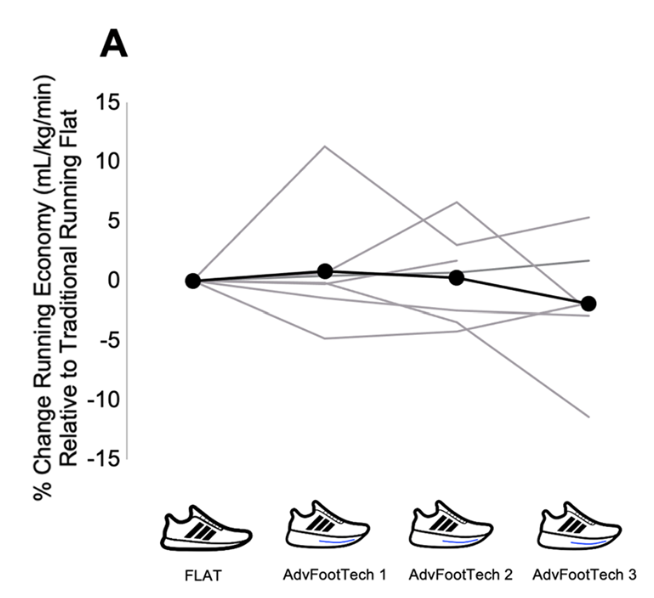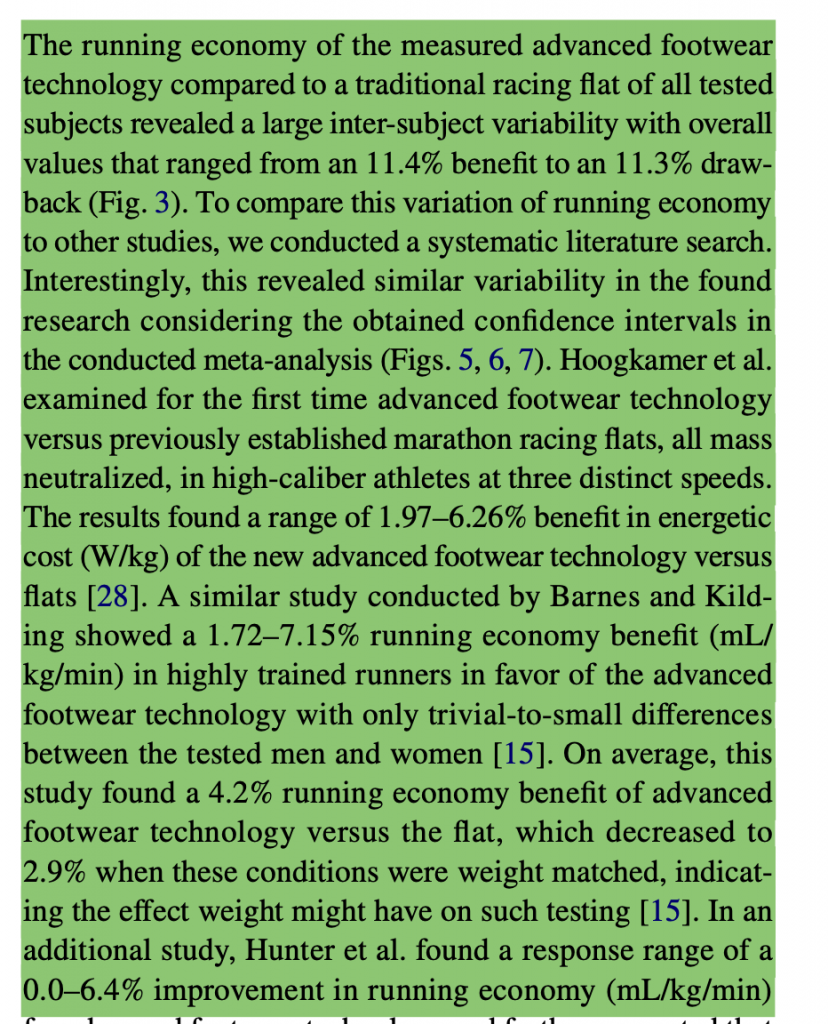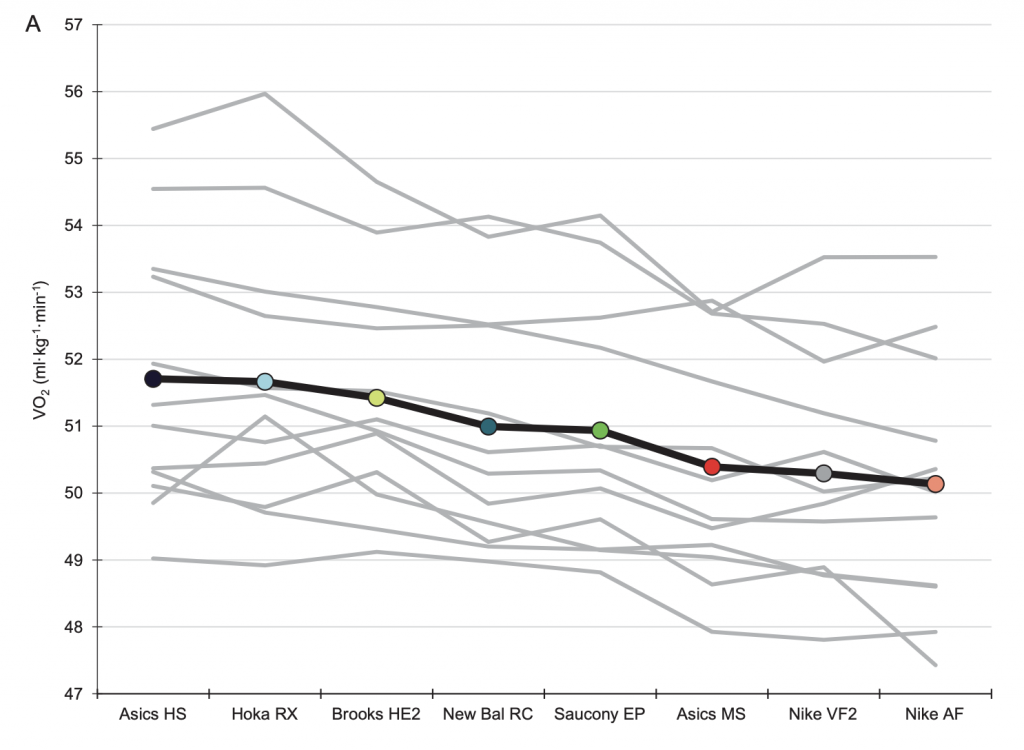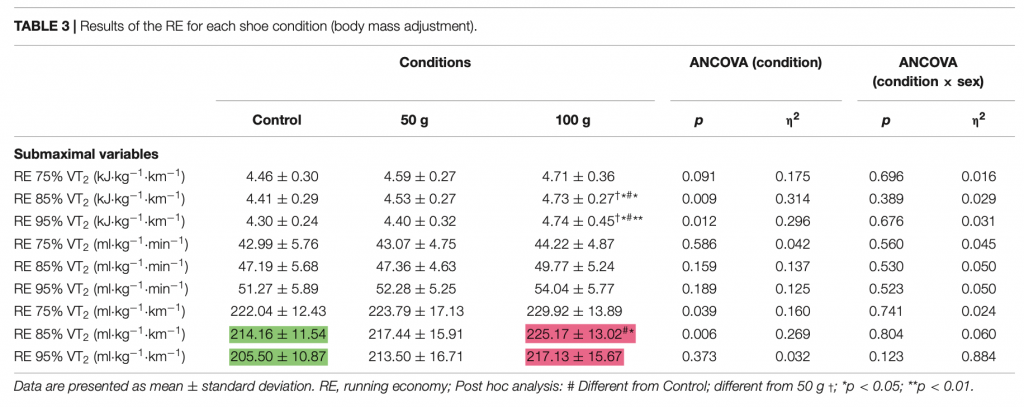Sports Scientists Ross Tucker and Geoff Burns React To Tigst Assefa’s Amazing 2:11:53 Marathon World Record
By Robert JohnsonAfter Ethiopia’s Tigst Assefa ran her stunning 2:11:53 world record at Sunday’s Berlin Marathon, I decided to reach out to sports scientists Ross Tucker and Geoff Burns to ask them for their thoughts on the record. It depressed me that so many people on Twitter and the messageboard were saying Assefa’s record had to be the result of doping. Below you will see a slightly edited version of the email I sent them and their responses.
Hope all is well. The women’s WR has a lot of people just saying, “Doping.” Depressing and I can’t really blame them, but for me, I don’t get what drug she would find that no one else would find.
Now we have the WR.
Ross Tucker, PhD in Exercise Physiology, co-host of The Real Science of Sport podcast, science and research consultant for World Rugby and ambassador and scientific advisor to Virgin Active and adidas
Hey Robert
Yeah, all good thanks ,hope you are well too.
Yeah, interesting questions, all of them. Just so happens that I’ve been reading up on this stuff today anyway, so I can try to answer you with some evidence.
I have to say though, we are still a little in the dark when it comes to elite athletes running at elite speeds in these shoes. There’s now quite a lot of research on the shoes, but it’s almost always done in trained runners, in lab conditions, and at ‘manageable speeds’, by which I mean, nothing like the 3:00 per Km range we’ve seen from men, and astonishingly, women in the last while.
So I preface all my answers with the not-so-fine-print that much of this is extrapolation and ‘estimated’ projection to elites, based on non-elites. That said, I would offer the following:
1. The shoes have distorted everything
I hate these shoes, and I truly wish the authorities had acted to prevent this entirely foreseeable situation, for a few reasons. The main one is that the range of responses to them is so large that we cannot sit with any confidence and evaluate performances between different athletes independent of this nagging doubt over what the shoes do. That is, the shoe is there, all the time, because the differences between athletes is smaller than the differences made by the shoe, to the same athlete, and between different athletes.
Take for instance this study, by Knopp et al. https://link.springer.com/article/10.1007/s40279-023-01816-1
It looked at elite Kenyan runners, and measured running economy in different ’super shoes’. Just look at this graph, where every light grey line is an individual athlete.
Look for instance at AdvFootTech1. One athlete is over 11% WORSE OFF (uses more oxygen per kg per min) than wearing the old traditional flat shoe, another is about 6% better. Then look at Tech 3, on the far right. The same athlete who is no better off in Tech1 is now 11% more economical in Tech3!
These are PROFOUND differences in running economy. Economy does not translate 1:1 to performance, but the model from Kipp et al suggested a performance benefit of about 2/3 of that RE economy improvement https://www.frontiersin.org/articles/10.3389/fphys.2019.00079/full
I quote: “At 5.5 m/s, i.e., world-class marathon pace, the predicted percent improvement in velocity is ∼2/3rds of the percent improvement in RE. For example, at 2:04 marathon pace, a 3% improvement in RE translates to a 1.97% faster velocity or 2:01:36, almost exactly equal to the recently set world record.
Now, imagine what that looks like at an 8% RE improvement. Or an 11% improvement in RE?
This is not unique. Here’s a section cut from that Knopp paper discussion – they mention the 11.4% benefit all the way to an 11.3% drawback. Massive range. They then talk about THREE other studies in which the range of improvements was between 0% and about 6%. You can read this summary below.
So what you’re looking at here is a similarly huge range of outcomes when wearing different shoes. Look for a moment at one athlete – pick anyone you’d like with a very up and down graph, and check how much of a difference there is from one shoe to the next. It’s easily 6% for some of these athletes just because of shoes. And these are all super shoes with carbon! The implication is that you can find TWO ATHLETES who have the same running economy when wearing different shoes, but they’re 4 to 6% apart using another shoe combination. You random the shoes, you change the outcome.
Why does this matter? I think it matters because some people in this debate have said that we can’t explain Assefa’s performance using the shoes, because Kosgei also had the shoes. And what I’m saying is “So what?”. The difference between shoes is so enormous that it could easily still be the SOLE EXPLANATION for that performance, if Assefa happens to be the athlete on one extreme end of the response curve, and Kosgei somewhere near the average (and of course, Radcliffe didn’t have them).
So you could well be looking at three quite similar performances, down to similar physiology, but with very different time outcomes because the three athletes lie at different points on this “non-user” – “medium responder” – “super responder” continuum.
The point is we just don’t know, and the evidence that does exist, albeit in non elite athletes (with the exception of the Knopp study) shows us that there is a range of responses that is comfortably 6%, and may even be as large as 11%. I don’t need to tell you the implications of one athlete getting 2% and the other 4% benefit.
- Mass makes a difference but it may not be in the ballpark as this shoe vs shoe variation
Now, to your actual question, sorry for the roundabout answer. But hopefully you’ll appreciate the reason for it.
Mass definitely makes a difference. Here’s a study from Colorado where they added 100g and 300g to the shoes and found that every 100g increased oxygen cost by 1.11%. The implication was a 0.65% worsening in a 3000m TT with 100g, and 2.37% with a 300g weight added.
https://pubmed.ncbi.nlm.nih.gov/27327023/
They conclude that 3000m TT performance gets worse by 0.78% per 100g of shoe mass.
The problem here is that they are running pretty slowly compared to the elites, but the principle is clear – the lightness of that shoe Assefa wore would be expected to have an effect. How large? Hard to say. If adding 100g adds 1% (let’s round it down), then removing 50 to 60g might cut it by 0.5%, according to this study.
More “aggressively”, here’s another study that tested (an admittedly small group of) trained runners at a higher intensity, and the speeds still aren’t fast (around 4 min/km for men): https://pubmed.ncbi.nlm.nih.gov/33071828/
Here’s the key data, with the faster speeds comparison highlighted:
So that’s a change of about 9 to 12 ml/kg/km, and it equates to around 4% to 5% for 100g of extra mass. Larger than the Colorado study mentioned above.
So it is clear that the mass of the shoe does have a material effect on physiology, and hence performance. So these new shoes, light as they are, are performance enhancing. But based on these two studies alone, one showing a 1.1% per 100g increase in oxygen cost, the other a 4 to 5% increase per 100g, it’s hard to pin down exactly what we’d expecting when taking off the 50 to 60 or grams that the new Adidas shoe does. Something, yes. Precisely? No idea!
It’s also possible that over a marathon, the effect is even more pronounced than the lab studies suggest because of the imperative to manage energy expenditure and delay fatigue. This study above found a 22% worsening in time to exhaustion, for instance. Way bigger than the economy effect. And that the energy cost, rather than the oxygen cost, is more affected. It also found that the faster the runners ran, the “more damaging” the added weight became to actual energy costs – the largest negative consequence was for the fastest speeds.
So Assefa should indeed have seen a benefit. From the reduction in mass, and from the possibility that she’s one of those who is getting a much larger benefit from the shoe, as suggested in those earlier studies.
But the bottom line, I’m afraid, is that I can’t quantify it. Maybe Geoff Burns could hazard a better guess based on data from elite runners.
But based on the data I’ve seen, the benefit of the mass reduction may be SMALLER than the benefit of the shoe, and it’s smaller than the range of potential responses to the shoe, and so you could have a number of scenarios here:
- You give an athlete who gets a big effect from the shoe the added benefit of reduced mass, and you’re looking at major improvements in energy cost and a significant performance boost
- You can an athlete who gets no benefit, or even a negative effect from the shoe, the added benefit of reduced mass, and you might “hide it away” entirely and never even know it’s there
- Any combination of the above, take your pick.
So this is where we are – too many moving targets, too many degrees of freedom, too many unanswerable questions. Only principles, broad ranges, but overlapping ranges, such that we can’t attribute a given portion of the improvement to each of the possible components that created it.
Now add doping! I don’t need to tell you how this complicates matters even more.
Basically, you have three possible “external” factors, over and above the athlete-factors (physiology). And not one of those can be pinned down exactly, but all are large.
This is hardly helpful. I long for the days when we could take those three factors and effectively disregard two of them – out go the shoe effects, out goes the mass benefit, because every shoe was close enough to its rivals, and close enough to its technological forefathers, that we could treat that effect as 1%, maybe slightly more, but we could handle it. No ’systems overload’.
What we are seeing now, total overload, and I can’t see how one teases out the effects of these things.
- A control group who we think aren’t doping as a reference point for TYPICAL improvements
One interesting thought experiment, and I suspect you could actually do it. There’s probably a good option of a control group here, in the form of serious runners, who take their sport pretty seriously and train well, and optimise every factor available to them, but who probably are NOT accessing the benefits of doping. If you could study how this group have improved since say 2021, when the super shoes became widely used, then I reckon you could establish a true “shoe effect”. Admittedly, it would not be in teh elite population, but what are the chances that Boston qualifying times, or the average of say the top 500 runners in the biggest marathons, might be analysed to establish the effect of shoes. Imagine for a second you find that excluding the elite fields, there has been a 2.1% improvement in the average finish time of the runners ranked 50th to 500, and that Boston is being a shift of about 2 to 3% in the standard of its applications?
That might help us know that the minimum average effect attributable to shoes is 2 to 3%. Then one would have to explore ranges, and find out that the top 10% are getting, say 4 to 5%. Or maybe not. Maybe it’s 3%. Maybe it’s 7%
I guess at this point, you start getting into murky waters, as per all the points above, but it might be of interest to see if this is possible, at least as a way to benchmark what is TYPICAL.
The problem is that Assefa is, by definition ATYPICAL. Running a marathon WR is not typical anyway, let alone one that improves by that much. So these general approaches to large populations will never be able to explain that. The Knopp paper, or the analysis of Joubert et al that I posted graphs from above, those are the ways to explore extreme physiology.
And they leave us feeling quite unsatisfied!
PS. Also, I don’t think it doesn’t mean she might be doping. I’d love for them to publish how often these athletes provide a urine sample and a blood sample for the passport, it would be helpful to know. Your confidence in Assefa’s performance would be quite different if you knew she had provided 17 samples between last year in Berlin and this race, compared to if it was 3, right? So that would help, and so too would more race results from her. I don’t know if the World Athletics profile on her is just missing race results, but she barely runs 10km and half marathons, so naturally, one marathon performance a year this good is going to raise eyebrows.
(Editor’s additions: Assefa raced 3 10ks, 3 half marathons, and 2 marathons in 2022 but her marathon WR is her first race of 2023).
Geoff Burns, PhD in Sports Science, ultramarathoner and physiologist for USOPC
A good question to disentangle possible effects of the shoes.
The Adidas APE1 (as it will be henceforth referred to) claims a few things that could be potentially advantageous. Let’s look at them and their potential benefits:
1. Weight – the men’s US size 9 of the APE1 is 138g. The men’s US size 9 VaporFly 3 is 184g. That’s a 46 g difference. The general rule that plays out for shoe weight is that every 100g added to the foot decreases running economy by 1%. Remember, the original VaporFly decreased running economy by 4%, for context (I often explained the magnitude to people as – imagine if you added almost a pound to each foot – that’s what the old shoes are compared to the VF in terms of efficiency, ha). So, the APE1 would be expected to enhance RE by ~0.46% (for a US M9) all other things being equal. I assume Assefa is not wearing a USM9 (a little smaller – so the difference is a little smaller), so let’s say she gets a 0.4% RE benefit from the weight savings alone.
2. Energy Return (Resilience) – the company claims that the foam returns even more energy than the “Lightstrike Pro” foam. We don’t know exactly what this polymer is (PEBA like the VF or otherwise), but I’ve tested the material properties of it in my lab, and it’s nearly identical to the Nike foam. So it’s either PEBA-based or a very similar chemical and manufacturing. I’ve tested their LS Pro foam as returning about ~85% energy (on par with the ZoomX PEBA from Nike). I can’t imagine it would really get much higher (say, higher 80s/maybe low 90s). The effect of that sort of step change is hard to quantify in terms of RE, but assuming the compliance (softness) is the same, it would recycle a tiny amount more energy per step. I would hedge on the benefit not being as large as that weight savings (I would also hedge that it’s probably not linear (ie – the RE benefit of going from 70 to 80 is probably larger than 80 to 90), so a few more percentage points in the energy return (say going from 85% to 90%) is likely beneficial, but not huge. I would peg it as almost certainly smaller than the 0.4% gain from the weight savings.
3. The “Rocker” Geometry – they changed the structure of the shoe to have a more extreme rocker (ie – the taper towards the forefoot starts further back on the shoe). It’s hard to quantify the effect of this. Again, I can’t imagine it’s larger than the weight savings or the energy return increase (they moved it from ~70% of the length of the shoe to 60% – so ~2.5 cm back).
So in sum, I think the weight savings (46g US M9 -> 0.4-0.5% RE benefit – likely 0.4% RE benefit (or less) for a smaller shoe) is the dominant benefit, with a smaller potential benefit coming from slightly enhanced foam. The rocker shift is harder to quantify, but likely not as large as those two. So all in all, you’re most likely looking at something that’s less than 1% enhancement in RE with very generous assumptions (the weight savings is pretty solid – the other two are harder to quantify).
In a lab it’s really really hard to detect differences less than 1%, so if we took a group of runners and had them run in the APE1 vs. the VaporFly, we might struggle to see a detectable difference unless we had a really large sample (and even then it might not be there).
If the RE enhancement was on the order of 0.7-0.8% for all those factors, you might be looking at a performance improvement of 0.5%. That would be about 40 sec. at women’s WR marathon pace. The weight alone might save her about 20 sec.
I actually think the women’s marathon WR had a little more room for improvement than the other records. No woman has yet exploited the potential to have full drafting for the entirety of the race. Assefa ran behind her male pacemaker for almost all the race. I believe Kosgei ran next to him for most of her run. Most women’s WRs are ~10% slower than men’s. The marathon was closest at 9.3% (aside from the 100m, ha), but I figured it could go even closer to the men’s because it’s the only race where a woman can be paced by and draft from a male for the entire race. It’s ~8.2% inferior to the men’s WR now, and 9.3% inferior to Kipchoge’s 1:59:40 (similar to what the old 2:14 marathon WR was relative to Kipchoge’s 2:01). Not otherworldly, but definitely fast.
I wouldn’t bet my life on no drugs though, for sure. But for her coach to say she’s one of, if not the most talented marathoner he’s worked with, that’s probably saying something from that guy.
Geoff
Talk about shoe tech and Assefa’s WR on our messageboard.











